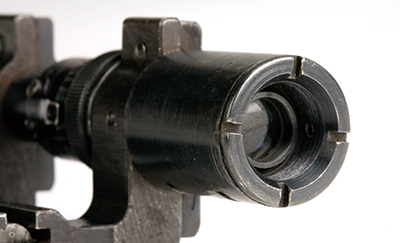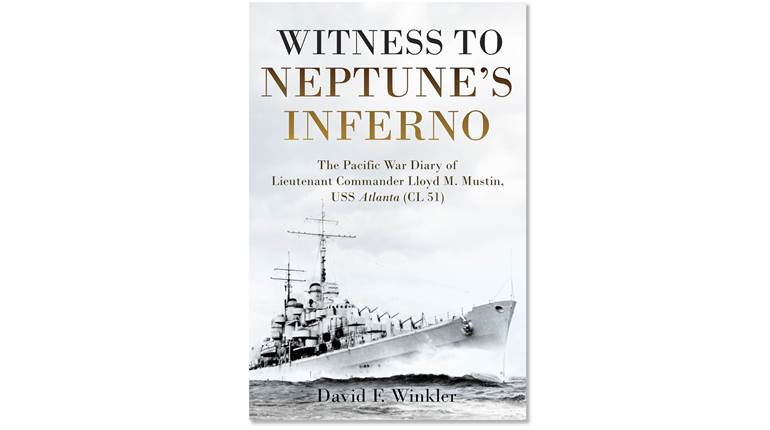
Both of these K98ks were made by Mauser Borsigwalde in 1941. The upper rifle is a refinished period factory conversion recently imported by Mitchell’s Mausers, while the lower rifle was converted with an adapter kit. It retains its original finish.
This article was first published in American Rifleman, December 2006
The story behind Mauser K98ks equipped with low-power, long-eye-relief scopes started with the conclusion of the Nazi invasion of Poland in 1939. After-action reports submitted by front-line German infantry officers included a request “that one rifleman in each infantry squad be provided with a telescopic sight to permit accurate fire on small or more-distant targets.”
One might think they were asking for sniper rifles, but what they wanted was something altogether different—namely an easy-to-use and sturdy scoped rifle that they could issue with little or no extra training to any one of the better marksmen in their ranks.
 In July 1941, this request was honored in the form of a scoped service rifle the German Army code-named “Adalbert b.” The K98k was already code-named System Adalbert, so naturally the scoped rifle was christened Adalbert b. A quick turnaround was possible because the H.Za, the German Army Ordnance Bureau, was already working on many of the necessary components, such as the long-eye-relief Zf 40 scope, for use with the G41 semi-automatic rifle.
In July 1941, this request was honored in the form of a scoped service rifle the German Army code-named “Adalbert b.” The K98k was already code-named System Adalbert, so naturally the scoped rifle was christened Adalbert b. A quick turnaround was possible because the H.Za, the German Army Ordnance Bureau, was already working on many of the necessary components, such as the long-eye-relief Zf 40 scope, for use with the G41 semi-automatic rifle.
The Zf 41 and Zf 41/1 scopes used on the K98k were derived from the Zf 40. Most of the external differences between these scopes were minor, and many Zf 40s were improved to Zf 41 or Zf 41/1 standards when they were overhauled. After the overhaul was completed, the old markings were struck or ground out, and the new designation was stamped nearby. Zf is an abbreviation for Zielfernrohr, which means “target scope” in German.
Even though long eye relief provided a number of advantages over conventional scopes with 2" to 4" of eye relief, scopes with 12" to 15" of eye relief had little precedent in either military or sporting optics. A long-eye-relief scope could be mounted over the rear-sight base rather than between the receiver bridges thus providing several advantages.
First, it did not interfere with the operation of the K98k’s three-position safety. Secondly, long-eye-relief scopes like the Zf 41 helped preserve the K98k’s rate of fire because they allowed the gun to be loaded with five-round stripper clips. Needless to say, this is no small consideration for a bolt-action military rifle. Lastly, the Zf 41’s low 1.5X magnification allowed a shooter to keep both eyes open for tactical awareness.

In addition to the versatility provided by its long eye relief, the Zf 41 scope was also compact—just 13 cm (5 ¼") long by itself. Attaching the stamped-steel rain shields increased the scope’s length to 15.5 cm (6¼"). Even with the rain shields fully extended, the scope measured no more than 17 cm (7¾") long. Two long pins supplied with the scope allowed it to be adjusted for windage and elevation. According to the manual, operators were not to attempt these adjustments. Only armorers at the company level or higher were to perform this work. However, the user could adjust the Zf 41 for range by rotating a knurled ring that was indexed from 100 to 800 meters in 50-meter increments.
The Zf 41’s reticle consisted of a wide vertical post extending from the six o’clock position that grew progressively narrower until it terminated in the center of the field of view. Two narrow horizontal arms extended outward from the three and nine o’clock positions. The horizontal arms did not meet, rather they stopped well short of the center. Despite the Zf 41’s low 1.5X magnification, its tiny 10.7 mm (0.42") objective lens produced a very narrow field of view and a very dim image in low-light conditions.
All of the Zf 41 mounts were made by the firm that designed it, Berlin-Lubecker, and were marked with its factory code “duv.” However, the factory that made the rifle usually made the base. The mount was split horizontally so that two, thick top straps retained the Zf 41 scope in its mount by a pair of stout slotted machine screws. The arms of the one-piece Zf 41 mount formed the shape of a “U.” Although the mount attached to a base on the left side of the receiver, the arms of the mount extended horizontally so that the scope was centered over the bore. The mount was low enough for a positive cheek weld but left sufficient clearance between it and the rear sight to allow the iron sights to be used as a backup.

A quick-release lever allowed the scope and mount to be removed for storage, transport or maintenance. According to regulations, the rifles were not shipped with the scopes attached. Accordingly, Zf 41 scopes came supplied with a stamped-steel canister that attached to the soldier’s equipment belt. The scope, the mount and the canister were stamped with the serial number of the rifle with which they were issued.
Standard K98ks that showed exceptional accuracy by shooting three of five shots from a machine rest into a 2 cm (0.78") square at 100 meters were chosen for conversion. K98ks fitted with Zf 41 scopes were modified at one of three factories; Mauser Oberndorf (byf), 1941-45; Mauser Borsigwalde (ar), 1941-44; and Berlin-Lubecker (duv), 1941-42.

Conversion started with removing the standard K98k rear-sight base. A rear-sight base that included the T-shaped base for the Zf 41 mount was installed in its place. Additionally, the area of the stock beneath the sight base was relieved from the handguard to the receiver ring to accommodate the scope base. Shortly after production started, the base was improved with the addition of a beveled groove that forced the two rollers inside the female dovetail downward and outward for a more positive return to zero when reattaching the scope.
In addition to the factory-built guns, a handful of K98ks were converted in the field with the aid of an ingenious adaptor kit. The kit allowed a company-level armorer to mount a Zf 41 to a standard K98k without any permanent alteration of the rifle. Installing the adaptor required little more than removing the rear-sight leaf, spring and guide and installing the adaptor in its place. Once the adaptor was installed, the components of the rear sight were re-attached. The downside of this adaptor kit was its selective fit. Richard Law, the author of Backbone of the Wehrmacht Vol. II—The Sniping Variants noted that just one in five rear sight bases was compatible with the mount.
Adalbert b arrived in the hands of German troops just as the need for a real sniper rifle became undeniable. As the German Army’s military fortunes soured, the shortage of proper sniper rifles with 4X scopes, now dubbed Scharfschutzengewehre (sharp-shooters’ rifles), forced it to reserve the Zf 41 for snipers, even though the 1.5X scope was ill-suited for that purpose.
The limitations of the Zf 41 scope were not lost on the troops themselves. Successful German snipers interviewed after the war stated that they started sniping with captured Russian Moisin-Nagant 91/30s fitted with 4X PE or PU scopes, and held on to them until they were issued K98ks with 4X scopes. By July 1944, the German Army finally recognized that there was no sense in reserving Zf 41 issue to snipers, and downgraded Adalbert b to a standard carbine. So it wasn’t until three years after the first Zf 41-equipped K98ks were delivered, that they were finally issued to the troops for whom they were intended—riflemen without any formal sniper training.
If Adalbert b is measured according to the role it was usually assigned—that of a sniper rifle—it was a dismal failure. Trained German sharpshooters equipped with the gun were saddled with a low-power 1.5X scope far beneath their marksmanship skills. However, if Adalbert b is measured by the demands of the role for which it was intended, namely as an enhanced battle rifle, it could be considered a success. It had the same rate of fire as a standard 98k, but its sturdy Zf 41 scope provided it with faster target acquisition and higher hit probability.
MITCHELL’S MAUSERS K98k With Zf 41

Mitchell’s Mausers has a small cache of refinished K98ks fitted with Zf 41 scopes. Also found in this cache were a number of Scharfschutzengewehre—K98ks with bases and rings for 4X scopes. Although the rings and bases are present on these guns, the scopes themselves are missing.
The refinished stocks of these K98ks are blonde—so they look just like they did when they were first issued.
With the exception of the bolts, which have been left in the white, their metal furniture has been re-blued. Our example was originally produced by Mauser Borsigwalde (ar) in 1941. The stock has the proper relief cut for the Berlin-Lubecker (duv) Zf 41 mount, and Busch Optik (cxn) made the scope itself. Interestingly, it has a World War I-manufacture carbine bolt, as evidenced by the flat knurled face on the bottom of the bolt handle. This is not so surprising; the Germans often used recycled parts to produce K98ks.
If you like your K98ks freshly scrubbed—here they are. For information on price and availability, contact: Mitchell Manufacturing Corp., P.O. Box 9295,
Fountain Valley, CA 92798; (714) 596-1013; www.mauser.org.





































